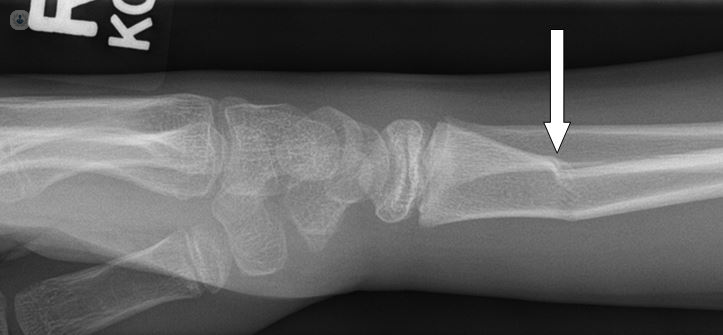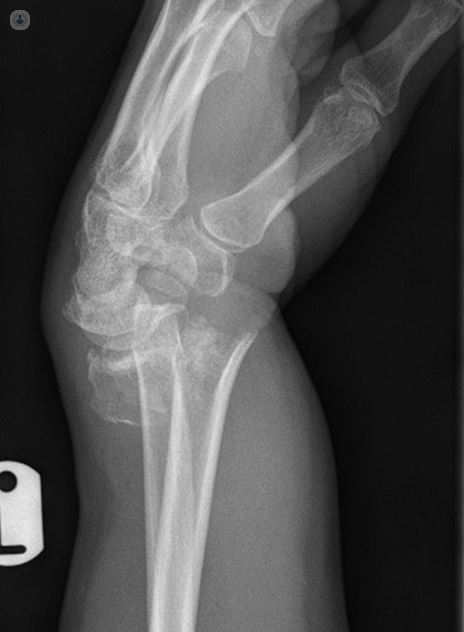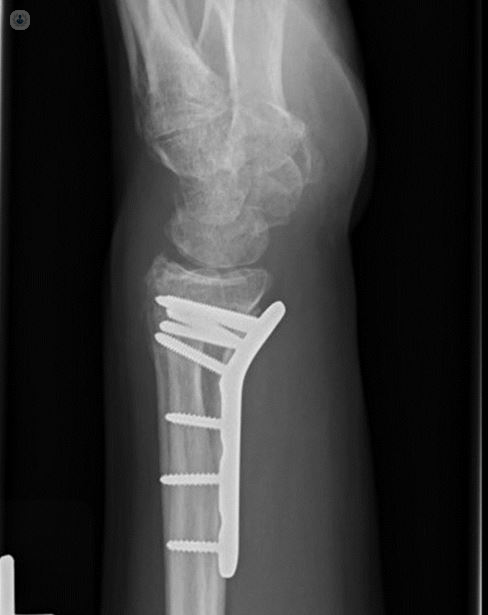What can cause a broken wrist?
Autore:Fractures of the wrist are one of the most common fractures to occur and they happen in all age groups. There are different bones in the wrist which can be fractured. The most frequent is the lower end of the forearm bone called the radius. Other bones, such as the scaphoid or other carpal bones can also be fractured. The most common mechanism is a simple fall on to the hand, such that the person’s weight is taken through the hand and the wrist is forced backwards.

Mr James Nicholl is an expert orthopaedic surgeon, and fractured wrists are something he commonly treats. Here he explains common causes of fractures, what a broken wrist would feel like and how they are treated.
What usually causes a broken wrist?
In children I see with broken wrists, there is frequently a history of falling off a climbing frame or similar, falling off bicycles or through sporting injuries. In young adults, these are often higher energy injuries, with falls from horses or motorbikes, and are quite commonly seen in snowboarders. In older patients and particularly post-menopausal women, the mechanism is usually a simple trip and fall on to the outstretched hand.
What does a broken wrist feel like? Is the pain distinct from a sprain or bruise?
If there is a fracture, there is usually immediate pain and there may have been an audible crack. For some fractures of the radius where the bone doesn’t move out of position, or for some scaphoid fractures, the pain may not be too bad and the patient is able to move the wrist. In this situation, it is not unusual for patients to seek medical advice a few days later when the wrist isn’t settling down. For more severe fractures, the wrist will be deformed, swollen and bruised and have very limited movement because of pain, and the fact that it is fractured is usually obvious.
What are the different types of wrist fracture?
In children, wrist fractures can be a simple buckle or torus fracture where one side of the bone has just crunched down a bit. The next most severe is a greenstick fracture where one side of the bone is completely broken, but the other side is bent. The most severe type is where the bone is completely displaced.

In adults, for fractures of the lower end of the radius, the bone can be broken but won’t have moved out of position. If the bone has displaced, then depending on the direction the bone has moved, these fractures have been given different names. For example, a Colles fracture is where the lower piece of bone has moved backwards and the fracture doesn’t extend into the wrist joint. In high energy injuries, the lower end of the radius can be broken into several pieces with damage to the surface of the joint. If the bone has punctured the skin, this is called an open fracture.
The scaphoid is a small bone which lies between the radius and the thumb. This is the second most common bone in the wrist to be fractured. Fractures can affect different parts of the scaphoid, and which part is damaged influences how likely the fracture is to heal.
What can I do to help with the pain, and how are wrist fractures treated?
The pain from a fracture can be reduced by immobilising the wrist. If the bone has moved out of position then re-aligning the bone and then applying a plaster cast will help. For fractures where the bone hasn’t displaced, in both children and adults, then usually a plaster of Paris backslab is applied, and then changed to a removable splint after a few days.
For some displaced fractures, once the diagnosis has been established with an X-ray, the bone is manipulated in the A&E department under either local anaesthetic or sedation, and a plaster cast is then applied. Some displaced fractures, either can’t be reduced by manipulation in A&E or if they are, they are unstable. In these cases, the patients are referred to an orthopaedic surgeon for treatment.


Scaphoid fractures which involve the middle part of the bone and aren’t significantly displaced are treated in a plaster cast, but if after six weeks or so the fracture hasn’t healed then early surgical intervention is advised. For fractures which are displaced or involve the end of the scaphoid closer to the wrist, called the proximal pole, then early surgery should be considered.
At what point should I see the doctor?
If following a fall or other injury to the wrist the wrist looks misshapen then you need to attend A&E. In many fractures this will not be the case, but if there is immediate pain, the wrist is swollen or bruised and it hurts to press on it then you should see a doctor.



